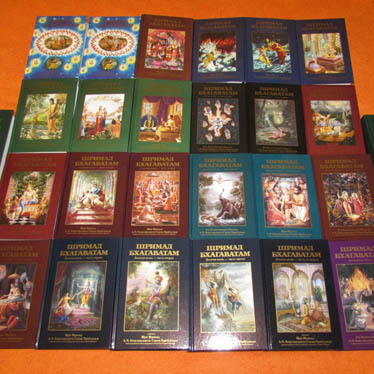There are two types of knowledge: paroksa-jnana or theoretical knowledge, and aparoksa-jnana or knowledge which becomes our own experience. Aparoksa-jnana gives such deep samskara, that it can never be forgotten, and at the critical time the deepest samskara will serve us. Therefore, during this lifetime we are trying to make spiritual samskaras as deep as possible. When we listen regularly, samskara becomes deep, we should also put our pride aside, then our heart becomes open. When one gets initiation, he is again open to samskaras, especially samskaras of hearing, he makes himself open to spiritual master.
In Kali-yuga people are unqualified, even the process of hearing is too difficult for them, but "Srimad-Bhagavatam" requires serious attention.
The main topic of the second canto of "Srimad-Bhagavatam" is sadhana-tattva. Materialistic people have sadhana, which leads them to death, but someone who is afraid of death should hear and think about the Lord. All the time when we think about the Lord, it should be based on our own experience, and we enhance it by reading "Srimad-Bhagavatam". We should not replace thinking about the Lord with some imagination. That’s why it is so important to hear the pastimes of the Lord related to this material world. Our bhakti can be in glorifying the Lord, on the basis of our own experience, everyone of us can find many reasons to glorify the Lord. The purpose of this material world is to rectify the conditioned souls, the Lord cares about us therefore He comes Himself again and again.
There are four subject-matters of "Srimad-Bhagavatam": 1) jnana or theoretical knowledge of the Lord, who is imperceptible to the senses; 2) vijnana or direct experience, we have direct experience of being in touch with the Lord’s energy; 3) rahasya - the ultimate purpose is to gain love of Godhead; 4) tadanga.
There are two categories of souls: 1) those who are sleeping peacefully; 2) those who are in an unconscious state because of sufferings. In both cases we can not be at present. Because of the compassion to those unconscious living entities "Srimad-Bhagavatam" gives a description of creation again and again to give us some chance to get interested and to get out from this semi conscious state which we are in now.
The third canto is the refutation of sankhya philosophy of Kapila Muni. The fourth canto is the refutation of karma-mimamsa concept. The fifth canto is the refutation of false renunciation which is the subject matter of uttara-mimamsa. The sixth canto talks about the independent nature of bhakti. The seventh canto talks about what are the means to get bhakti within our heart. The eighth canto talks about saranagati or surrendering oneself to the Lord. The ninth canto talks about the advent of the Lord in this material world and the relationship with the Lord of those souls who surrendered to the Lord. We will not be able to understand and to appreciate the tenth canto unless we go through this whole process of "Srimad-Bhagavatam", that’s the structural design of "Bhagavatam".





